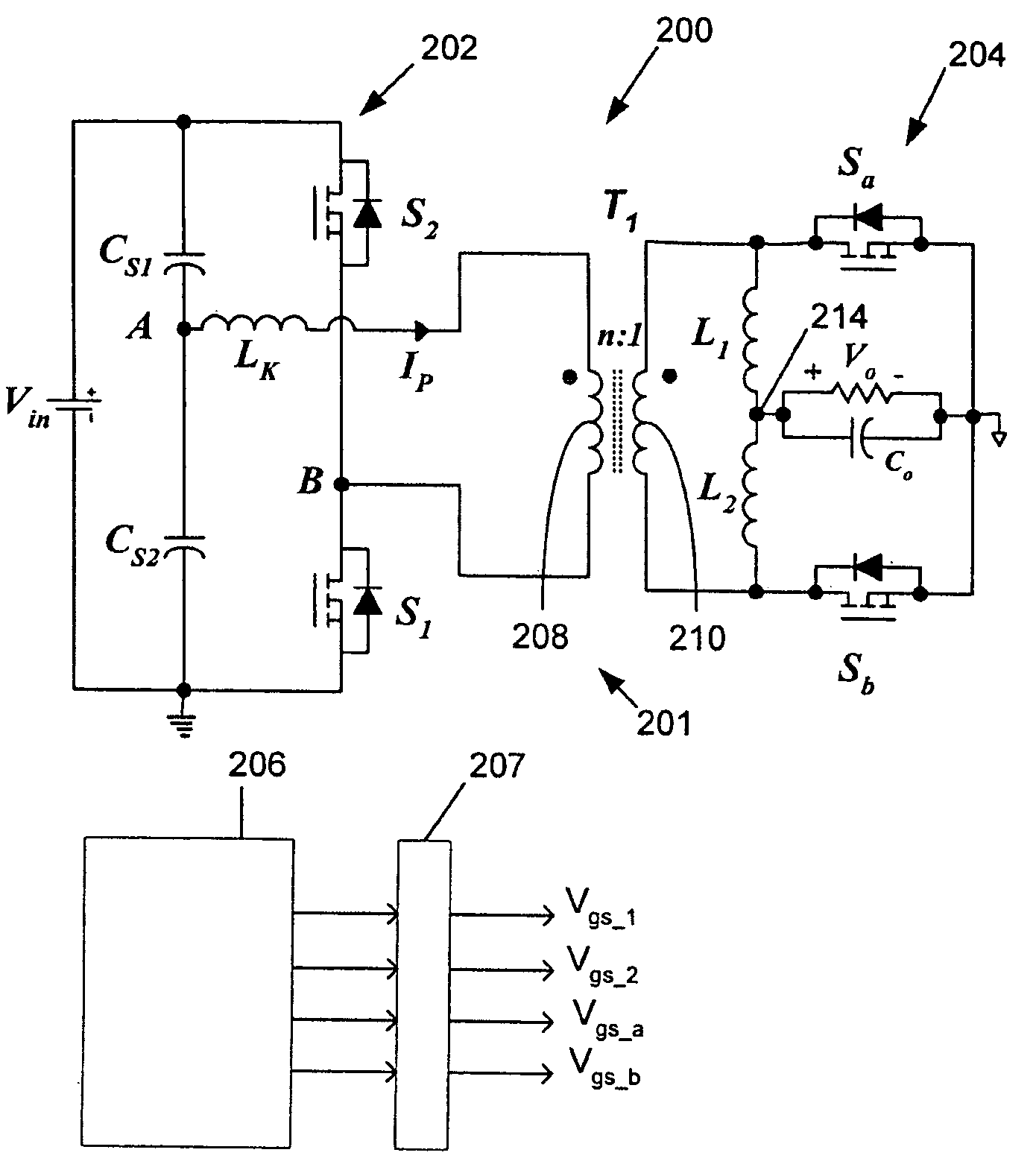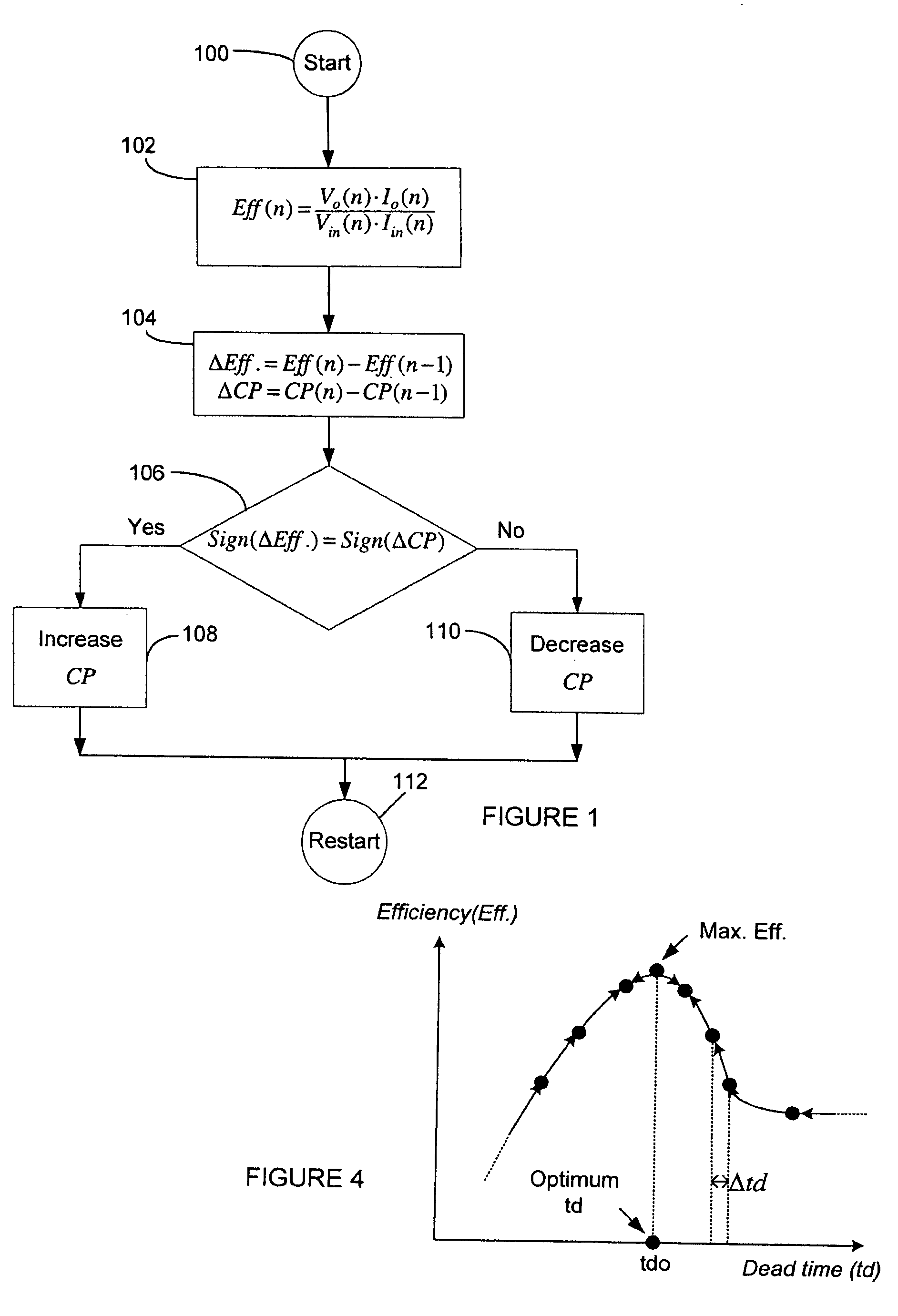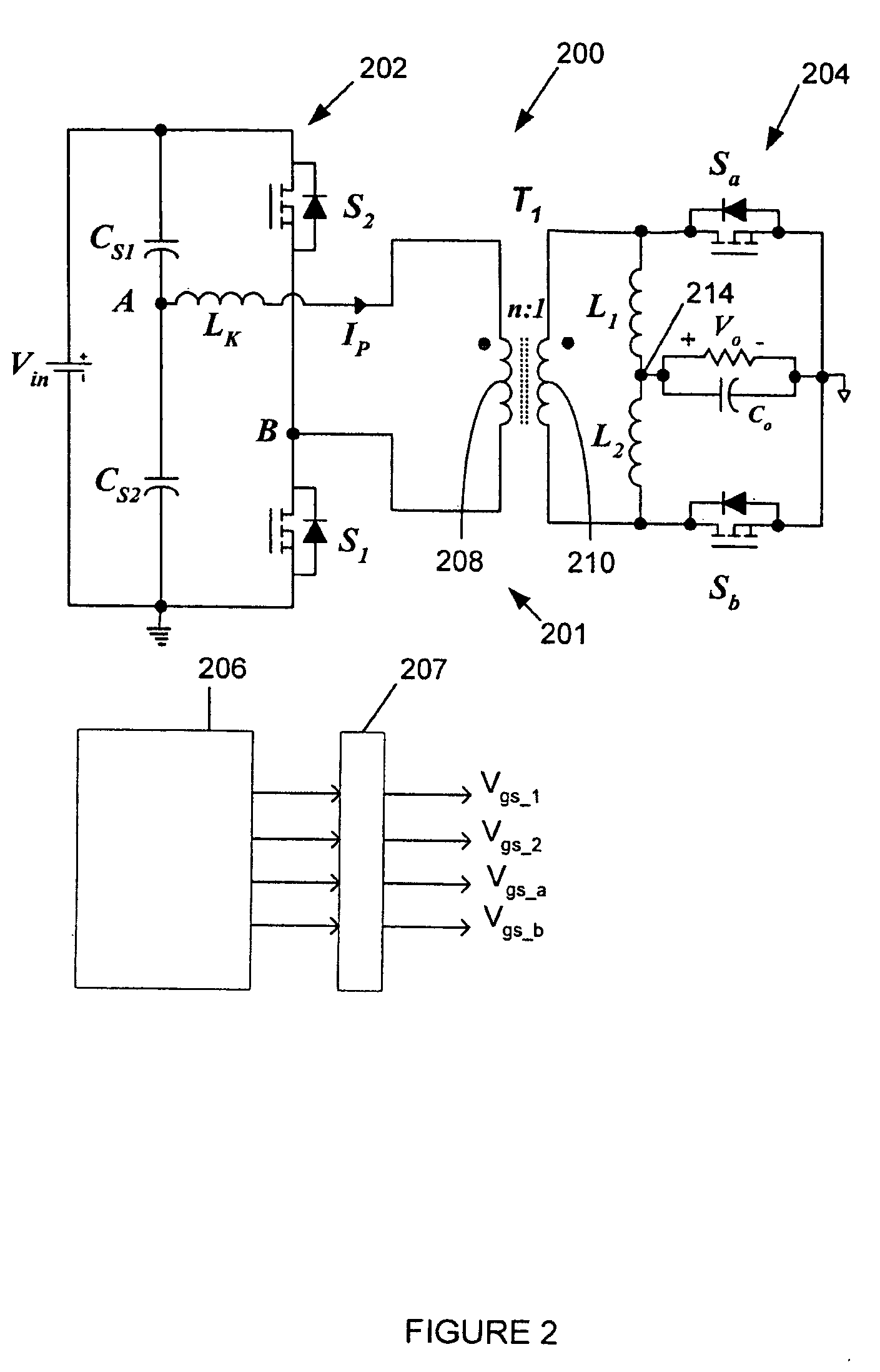Dynamic optimization of efficiency using dead time and FET drive control
a technology of dead time and drive control, applied in the direction of dc-dc conversion, power conversion system, instruments, etc., can solve the problems of increasing cost, not ensuring improvement, maximum efficiency and performance, etc., and achieve the effect of optimizing efficiency and changing the efficiency of the converter
- Summary
- Abstract
- Description
- Claims
- Application Information
AI Technical Summary
Problems solved by technology
Method used
Image
Examples
Embodiment Construction
[0023] The following description of the preferred embodiment(s) is merely exemplary in nature and is in no way intended to limit the invention, its application, or uses.
[0024] A method of controlling power converters in accordance with this invention, referred to herein as Maximum Efficiency Point Tracking (“MEPT”), tracks system efficiency and dynamically optimizes one or more system parameters, referred to herein as “controlled parameters” to maximize efficiency, or in other words minimum input power point causing efficiency maximization. In this regard, a system or controlled parameter is a parameter affecting operation of the system that is controlled or varied to optimize efficiency. The inventive MEPT method tracks the efficiency of the converter to find the optimized value of the parameter(s) that are dynamically adjusted by tracking the direction of change of the efficiency (ΔEff.) of the converter, that is, whether it is increasing or decreasing, and the direction of chang...
PUM
 Login to View More
Login to View More Abstract
Description
Claims
Application Information
 Login to View More
Login to View More - R&D
- Intellectual Property
- Life Sciences
- Materials
- Tech Scout
- Unparalleled Data Quality
- Higher Quality Content
- 60% Fewer Hallucinations
Browse by: Latest US Patents, China's latest patents, Technical Efficacy Thesaurus, Application Domain, Technology Topic, Popular Technical Reports.
© 2025 PatSnap. All rights reserved.Legal|Privacy policy|Modern Slavery Act Transparency Statement|Sitemap|About US| Contact US: help@patsnap.com



